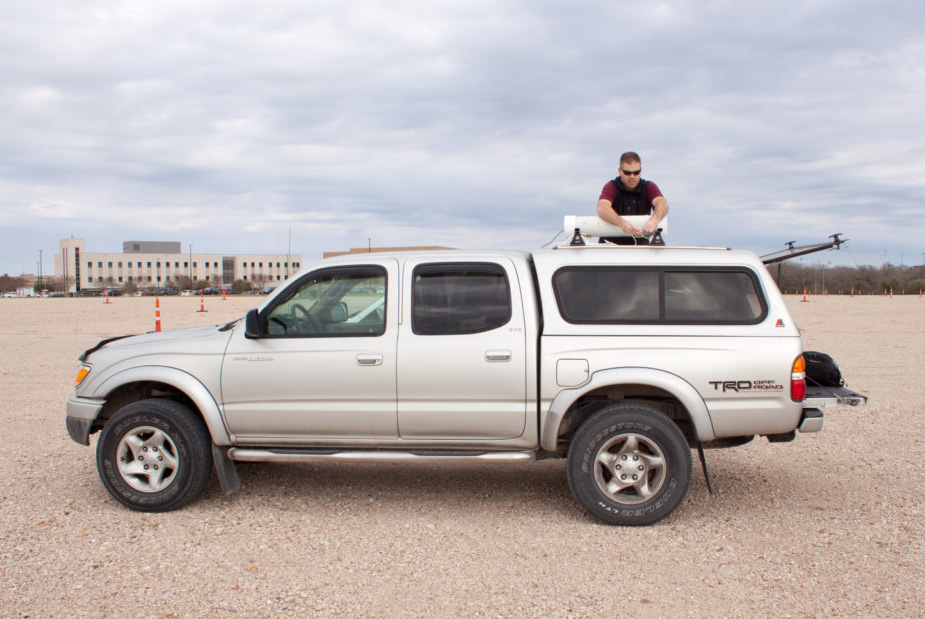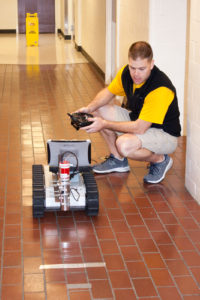
Radiation detectors are deployed for many different uses in a variety of different field conditions, and many of these detection systems are mobile. The efficiency of radiation detection systems is known to decrease as the speed of the detection system increases. Understanding how these systems perform under increasing speeds and in changing environments will help improve the system’s effectiveness and ultimately decrease the cost of performing a survey.
Lt. James Falkner is a Ph.D. student working with Dr. Craig Marianno, deputy director of the TEES Center for Nuclear Security Science and Policy Initiatives (NSSPI) and an assistant professor of nuclear engineering, to analyze the performance of mobile radiation detection systems with respect to how fast the systems are moving.
Falkner’s research is a combination of simulation and experimentation. He used computer models to simulate simple detection systems and derive the underlying relationship between efficiency and speed. He then conducted experiments to verify this relationship using real world data. Data was first gathered in a laboratory using a 2 x 2 inch sodium iodide detector attached to a robot traveling between 20-120 centimeters per second. Data was then gathered outdoors using a 2x4x16 inch sodium iodide detector attached to a vehicle traveling between 10-40 miles per hour. Finally, he tested the relationship using aerial data provided by two partner groups gathered using large multi-detector systems traveling between 70-140 knots.

By comparing field data with the results of the computer simulations, he was able to validate the relationship between efficiency and speed. Understanding how speed effects detector efficiency allows surveyors to tailor their survey plans for maximum effectiveness. Using this relationship, surveyors can be confident in their survey results, conduct surveys in the most efficient way possible, or identify lower thresholds for their surveys given operational constraints on their detection system.
Falkner is an active duty Lieutenant in the Medical Service Corps of the United States Navy. His previous assignments include the submarine tender USS Emory S. Land and the Naval Dosimetry Center. He received a Master’s degree in applied physics from Johns Hopkins University in 2010.
The views expressed in this article reflect the results of research conducted by the author and do not necessarily reflect the official policy or position of the Department of the Navy, Department of Defense, nor the United States Government.
This work was supported by Navy Medicine Professional Development Center as part of Falkner’s Duty-Under-Instruction program.
Falkner is a military service member of the United States government. His work was prepared as part of his official duties. Title 17 U.S.C. 105 provides that “copyright protection under this title is not available for any work of the United States Government.” Title 17 U.S.C. 101 defines a U.S. Government work as work prepared by a military service member or employee of the U.S. Government as part of that person’s official duties.
